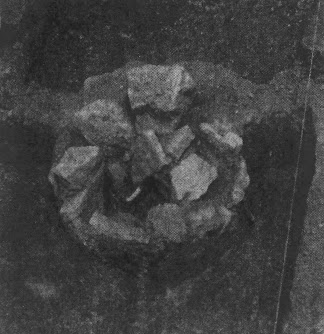J.J. Newman came from Russia to the United States in August of 1889, at the age of 20. Born near the German border of Russia in 1869, during the reign of Russian Czar II, his father and forefathers before him had all been Jewish Rabbis, and beginning at the age of 6, that was the path Joseph Jacob Newman expected to follow.
Newman came to America through the influence of his brother, a Rabbi in Toronto Canada. His entire family eventually left Russia, with Newman bringing his mother over in 1906. He described Russia as a horrible place to live, saying that "A nation that tried to destroy religion will only destroy itself."
Arriving in America, Newman did not speak English. Knowing the Jewish bible almost by heart, he learned his new countries language by comparing the bible he knew with the one written in English. His brother in Toronto helped him brush up on pronunciation.
For years he had studied music, and in America, he "took his first unfamiliar steps down the world famous Broadway". According to the Danville Morning News in 1949, Newman was a musical star on Broadway, but as much as he loved singing, he couldn't stand the back stage atmosphere of theatrical life. Newman said that to outsiders Broadway Beaus and Belles may seem glamourous, bur it's lustre was hidden under a heavy coat o moral tarnish.
The young man abandoned his career plans in search of a more wholesome atmosphere, accepting an offer from his brother in law to go to Philipsburg (near State College) where he found a job as a clerk in a men's clothing store. After two and a half years with Adleman and Ratowski, Newman moved to Renovo where he worked for another two and a half years.
It was in Renovo that Newman met Julias Heim, resident of Danville, and it was through his influence that Newman moved to Danville to open his first business venture. Mrs Heim & Mr Newman became great friends, "for they spoke the same language - the language of music lovers."
What Danville Looked Like When Newman Arrived in 1899
Other businesses, as they were located in 1897 (and for most of them, still in 1899 when Newman arrived) included:
- Danville National Bank, & The First National Bank were both in operation
- Sam J. Welliver Hardware Store, 307 Mill Street
- Cole's Hardware & The Montour House were in operation
- In 1949, Gem Furniture was located at 401 Mill Street. In 1897, P.C. Murray and Sons operated a Department store at that location.
- Gosh's Drug Store was located at 108 Mill St in 1897, advertising hot water bottles at 75 cents, and "no mistakes with our new numbering machine." In 1949, Cain's Pharmacy was in that location.
- A.H. Grone had a book store, in 1897, where Angles was located in 1949.
- Corcgens [1949] had been the location pf the Globe Warehouse, a barber shop, and a doctors office, in 1897.
- Where Newberry's stood in 1949, a private home stood. There a barber cut hair in the basement while a photographer took pictures in the rear of the second floor, in 1897
- The present site of the Moose Lodge [1949] was occupied by a stationary store, a pool room, and Shuster's Wholesale Liquor in 1897.
- Sam F. Ricketts had a men's clothing store where McCloughans was located in 1949, and an undertaker occupied the place Wagners Jewelry store filled in 1949.
- Woolworths replaced Sol. Lyons Department store. A jeweler, and Thomas the wallpaper dealer had stores on the site what houses R.L. Marks in 1949.
- In 1949, Keefer's Department store was located at 298-300 Mill Street. In 1897, J. Doster's Son's was at that location.
- Community Jewelers occupied the location that was, in 1949, Lungers Shoe Store.
- Tooley's Cash Store and Rea & Derrick's were both operating in 1897 in Danville.
- The Judy Miller Shop replaced Western Union and Adam's Express, by 1949.
- The Montour COunty Trust site had once been occupied by the City Hotel.
- Jackie Meyers Café served Roast Beef to it's customers on the spot where Otto's Auto distribured Goodrich Merchandise in 1949.
- The Armory had been located where Kindt Chevrolet stood in 1949.
- "And of course, everyone knows that the old Opera House was located where the Post office now stands"





























.jpg)

















